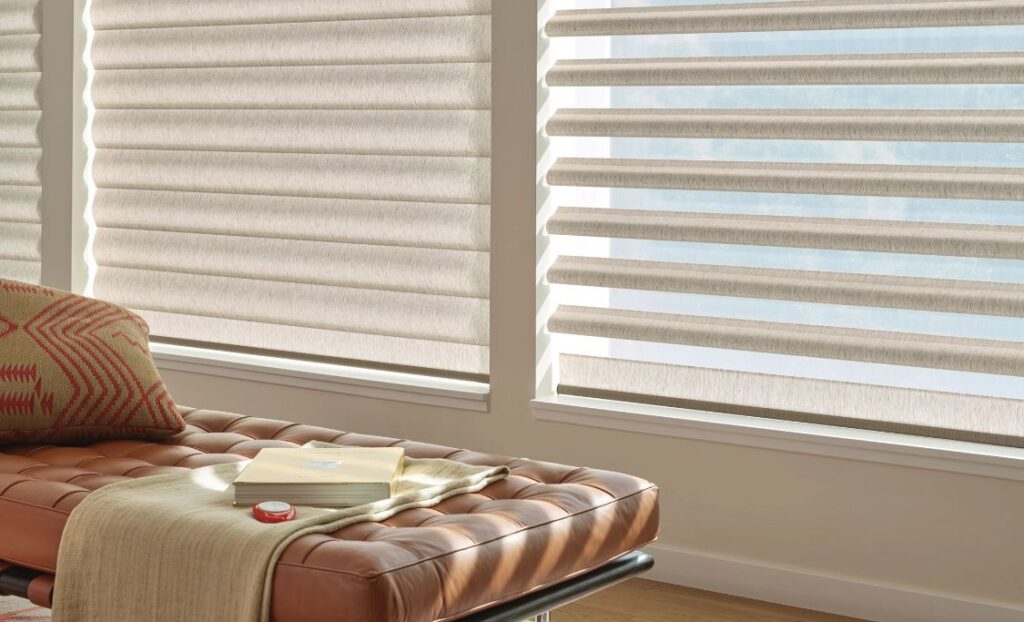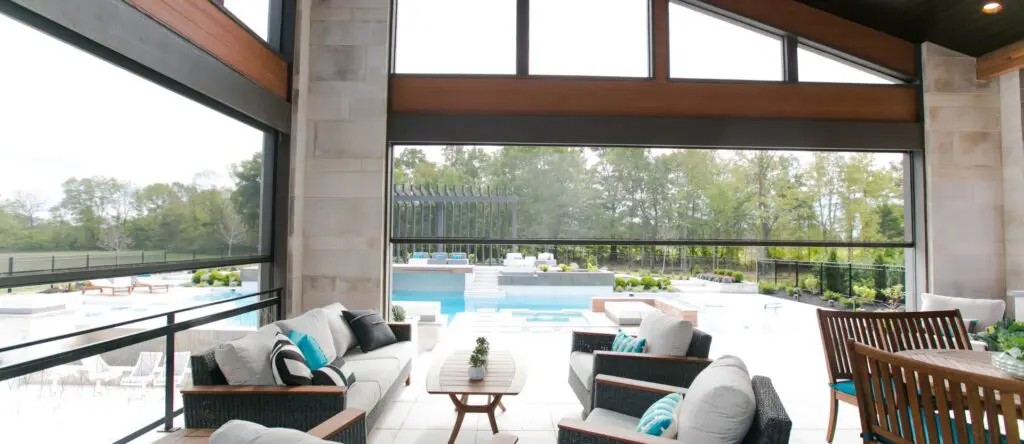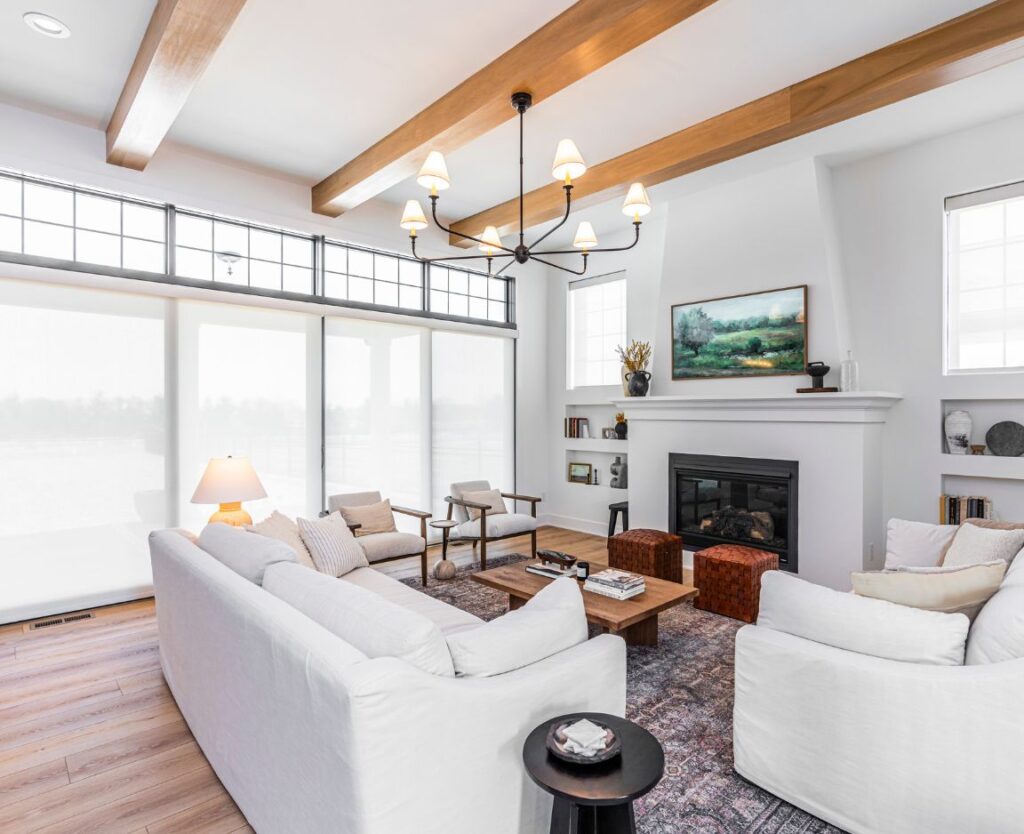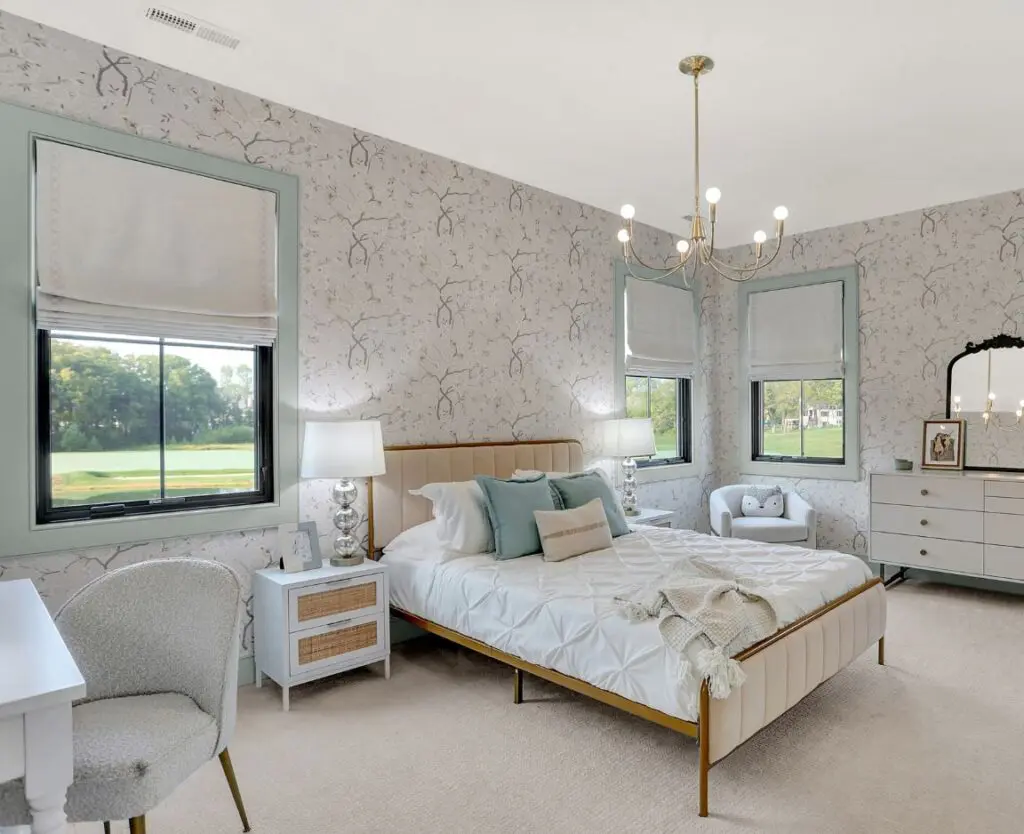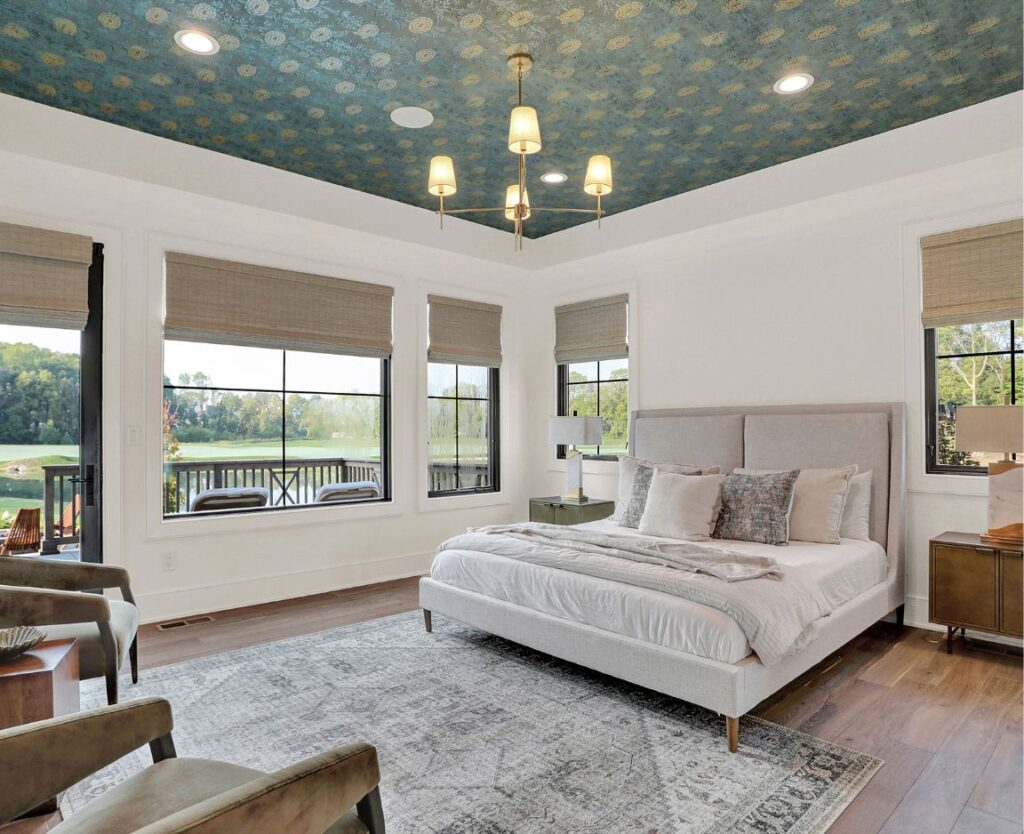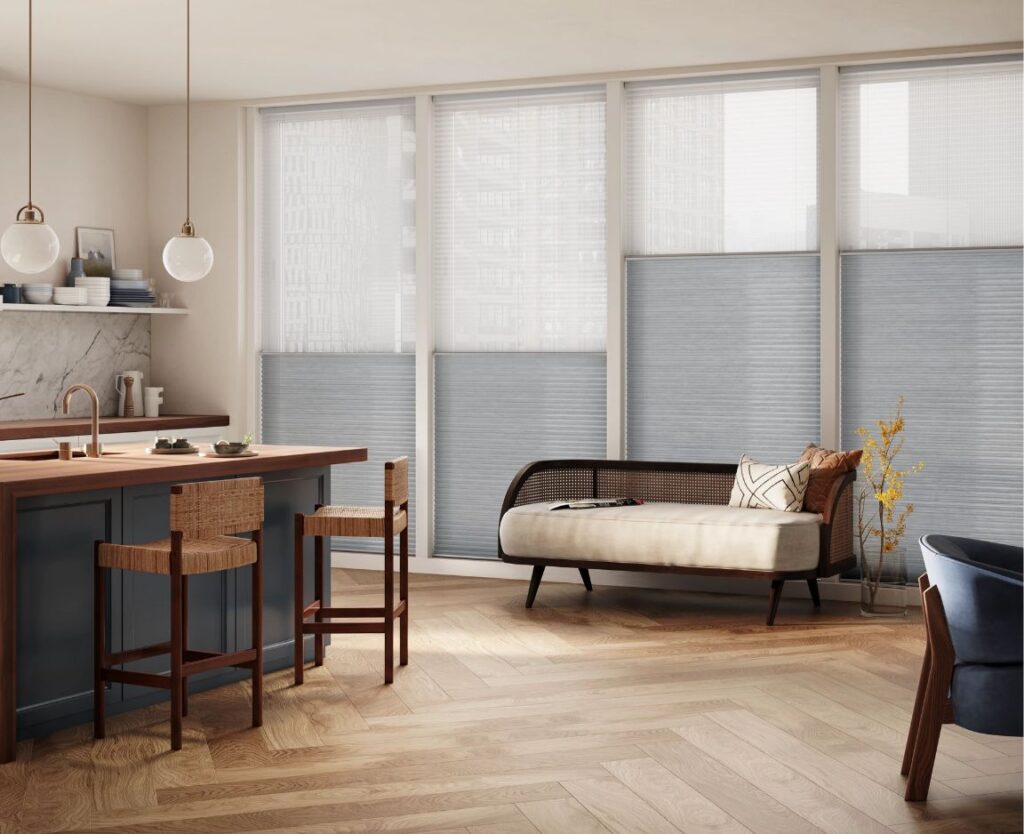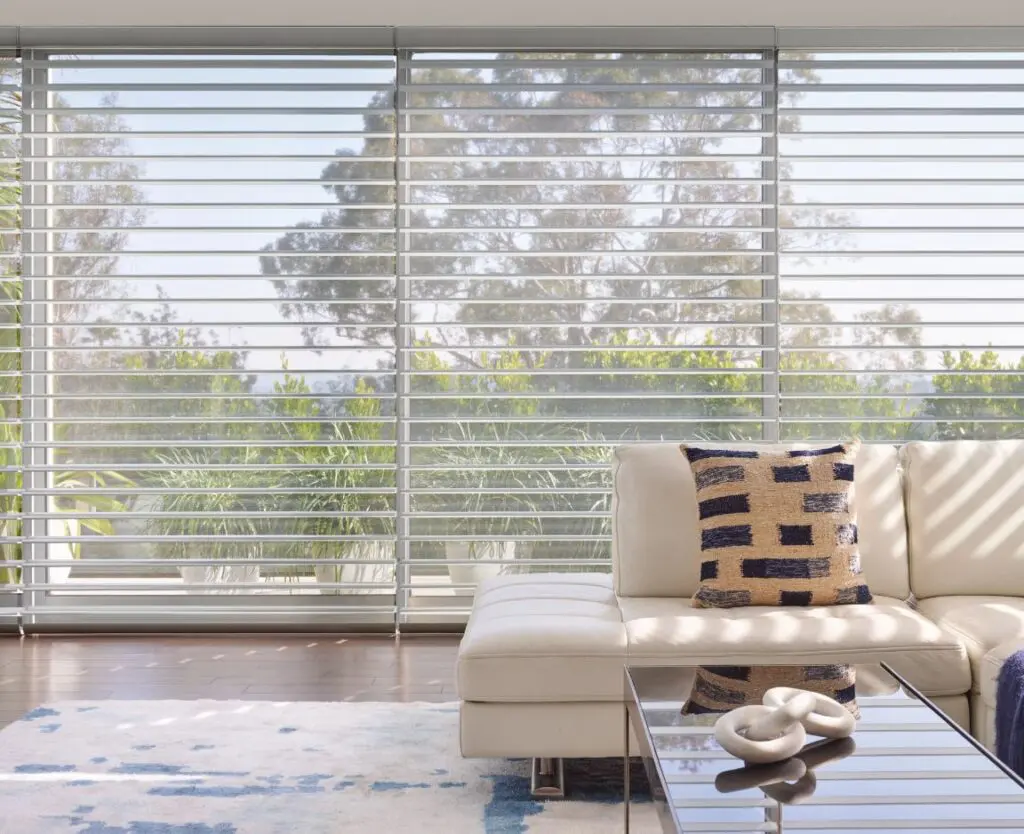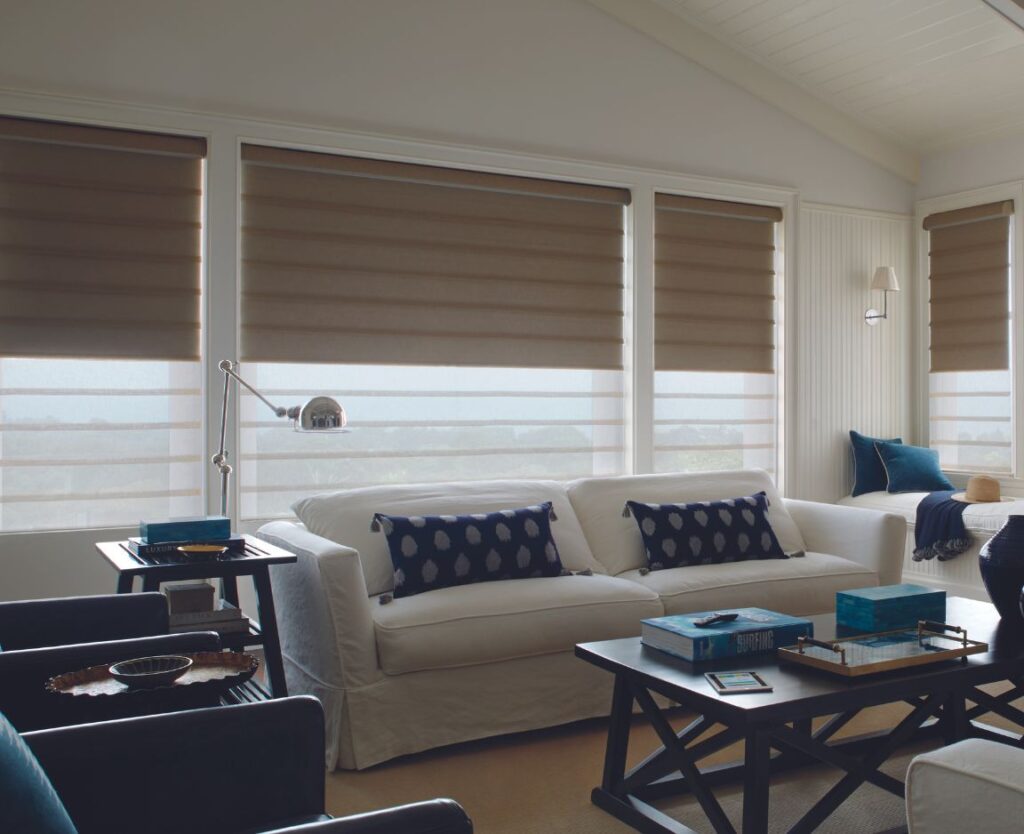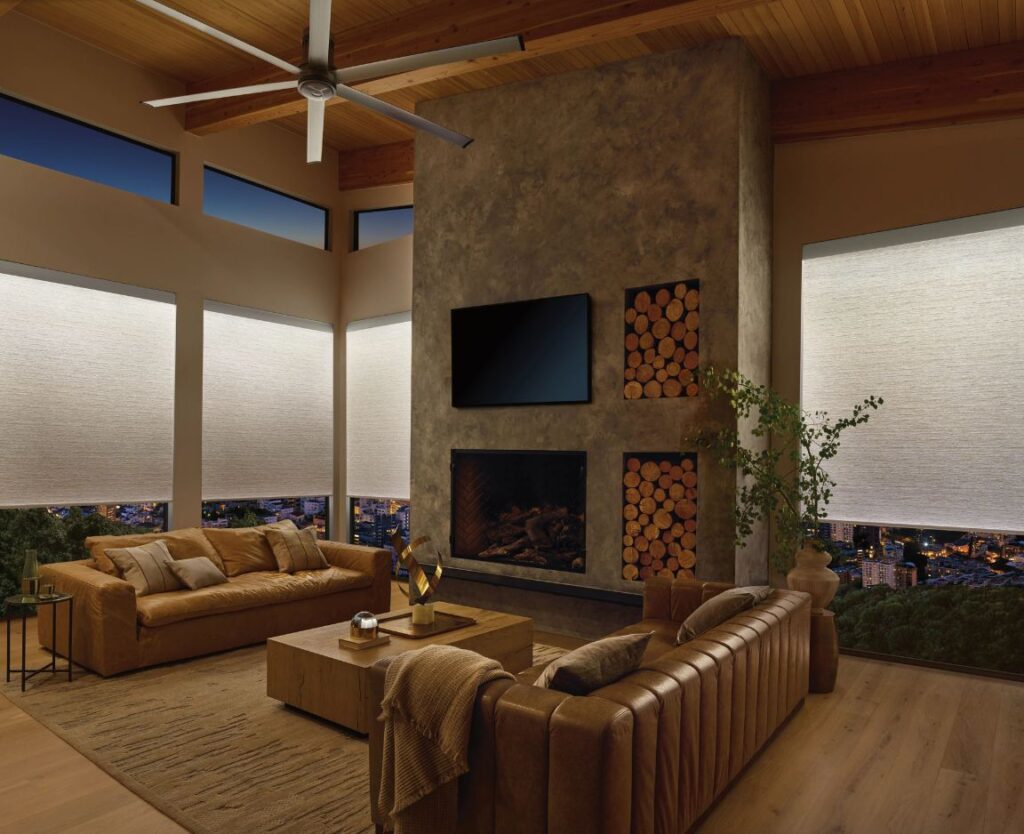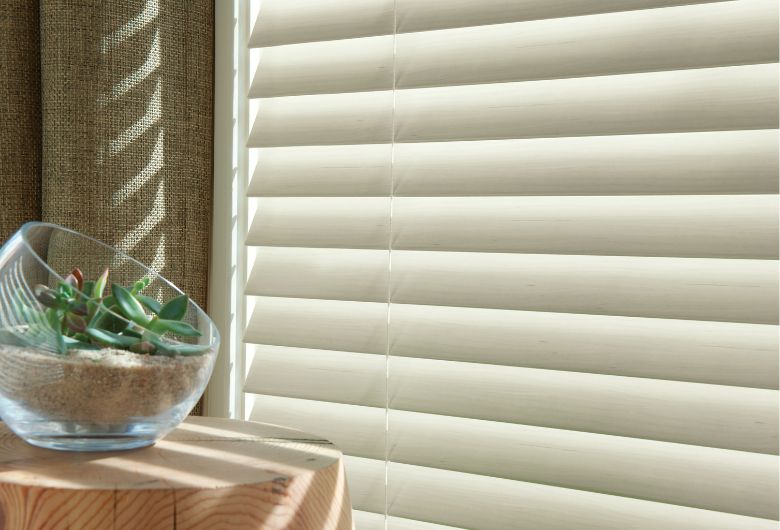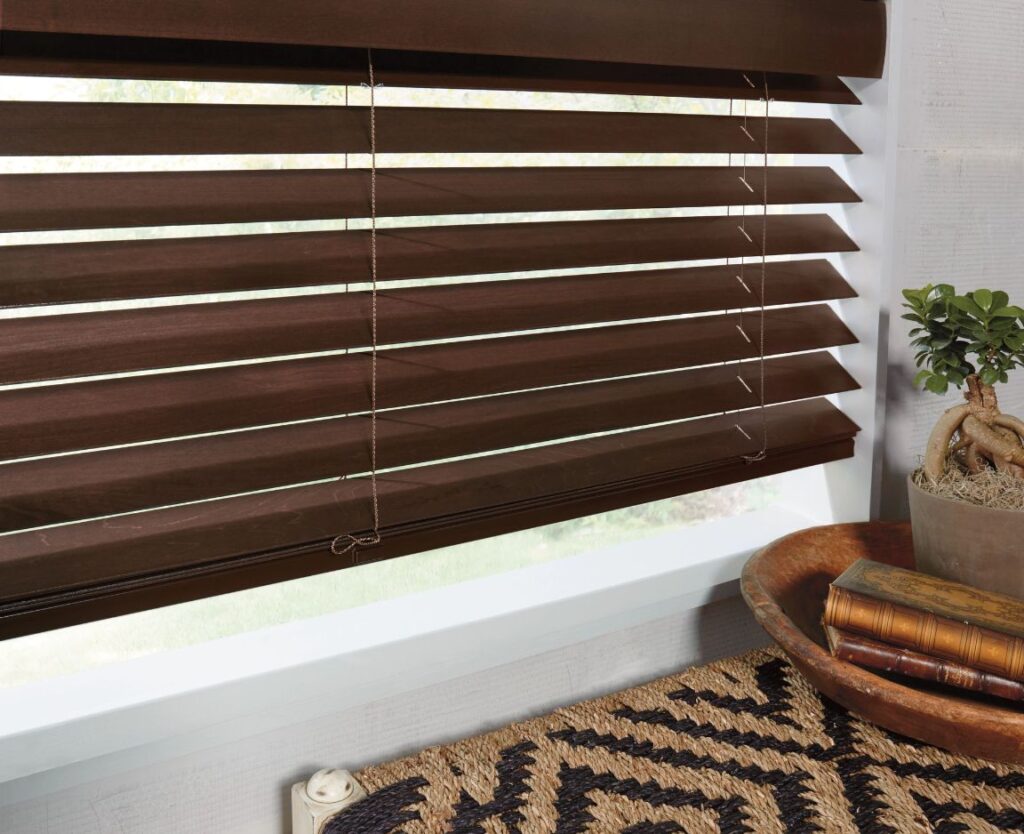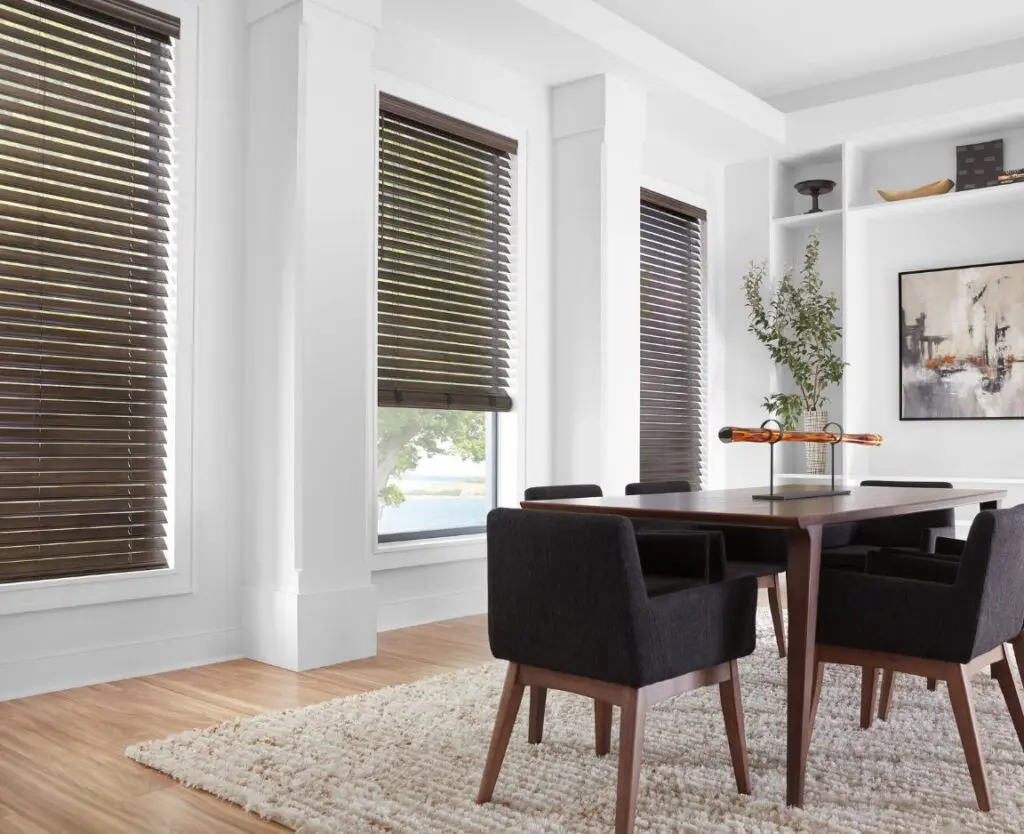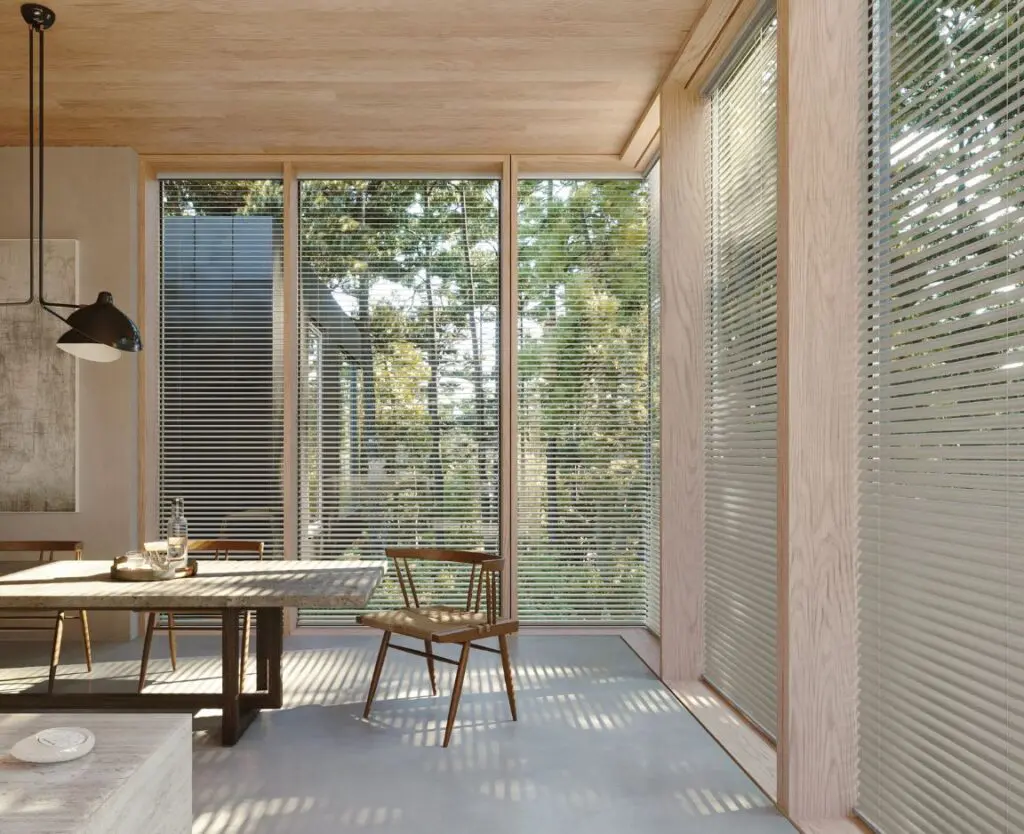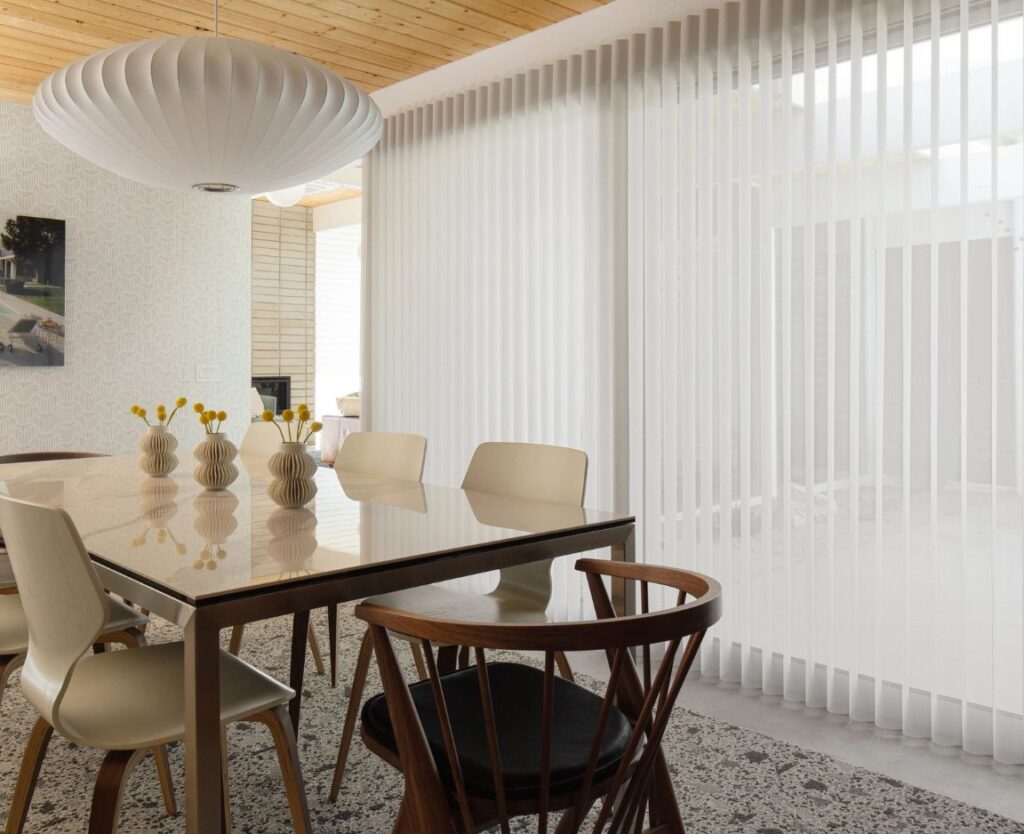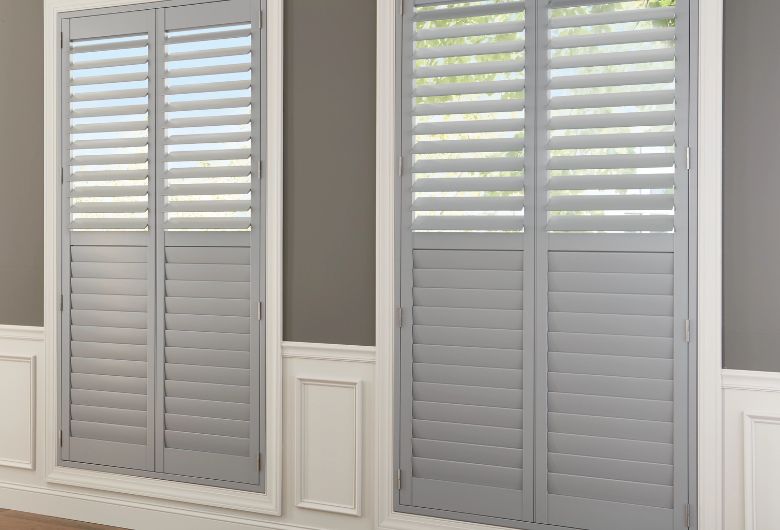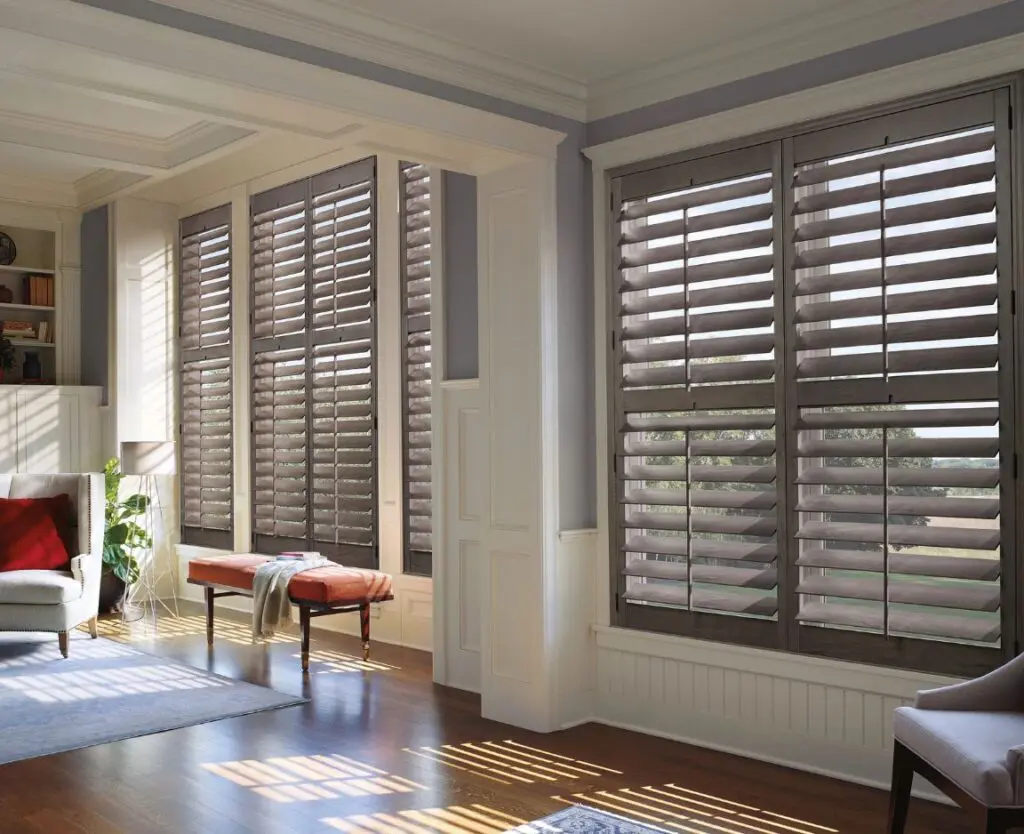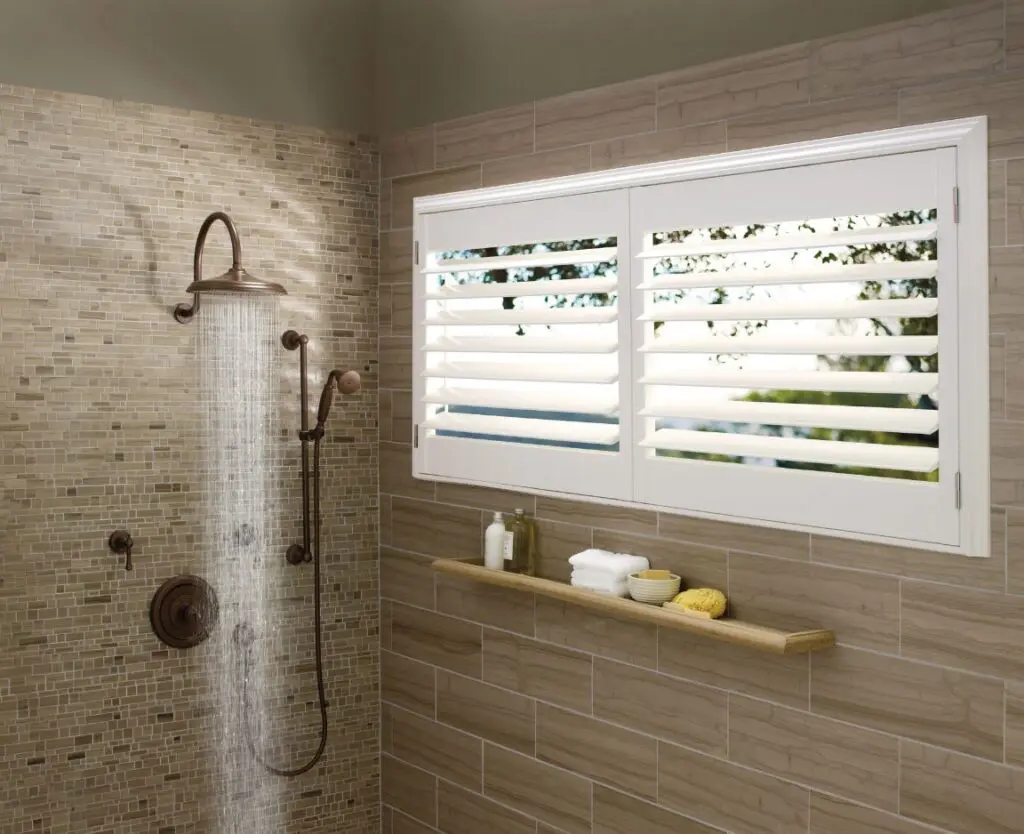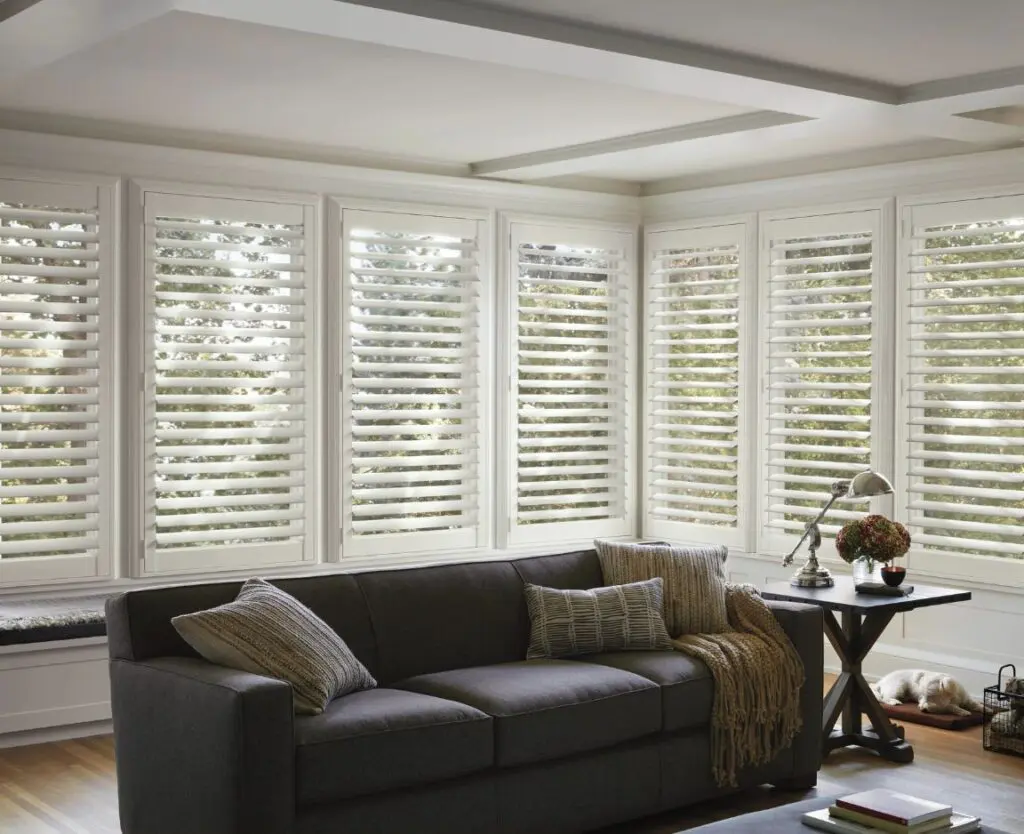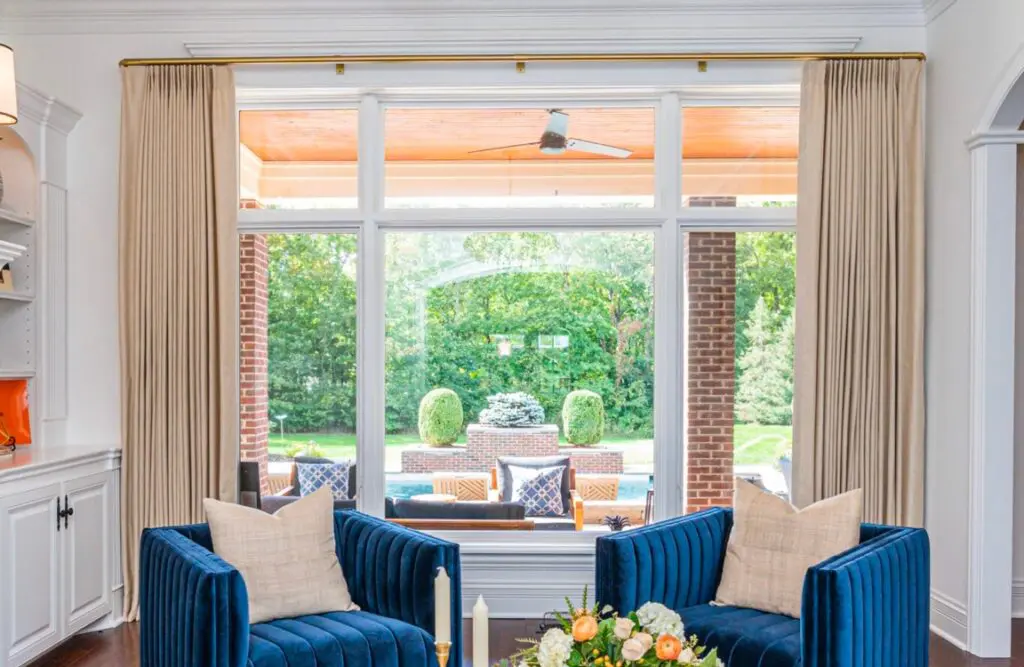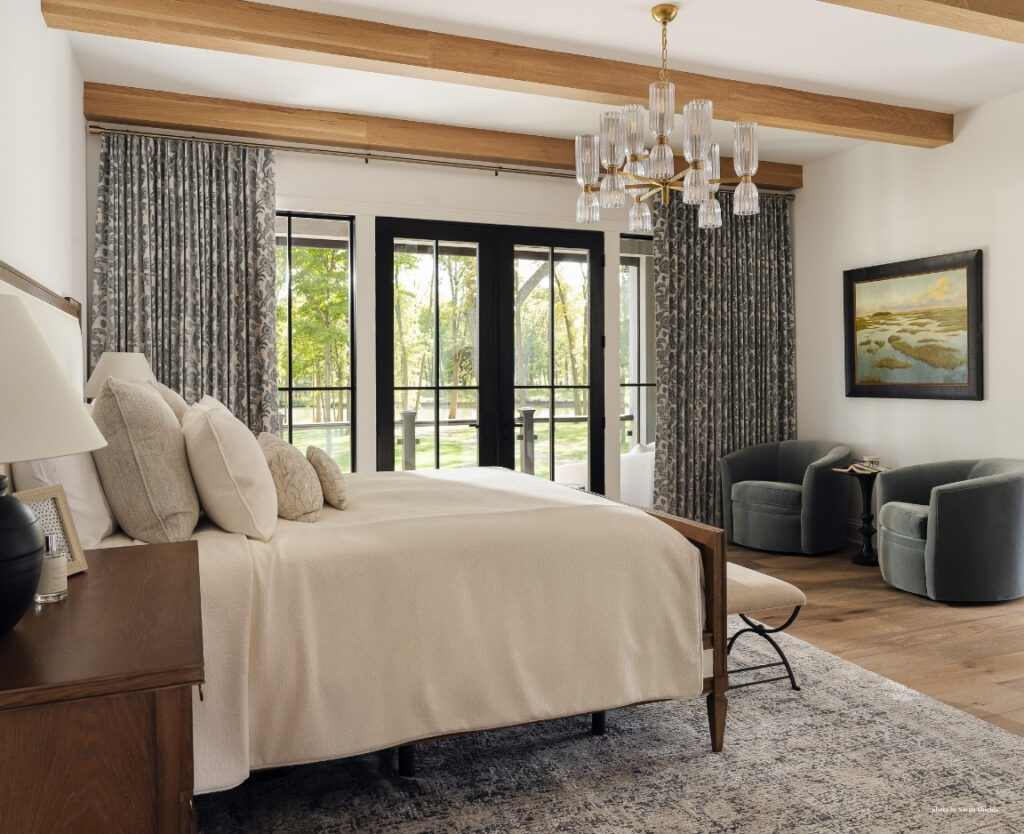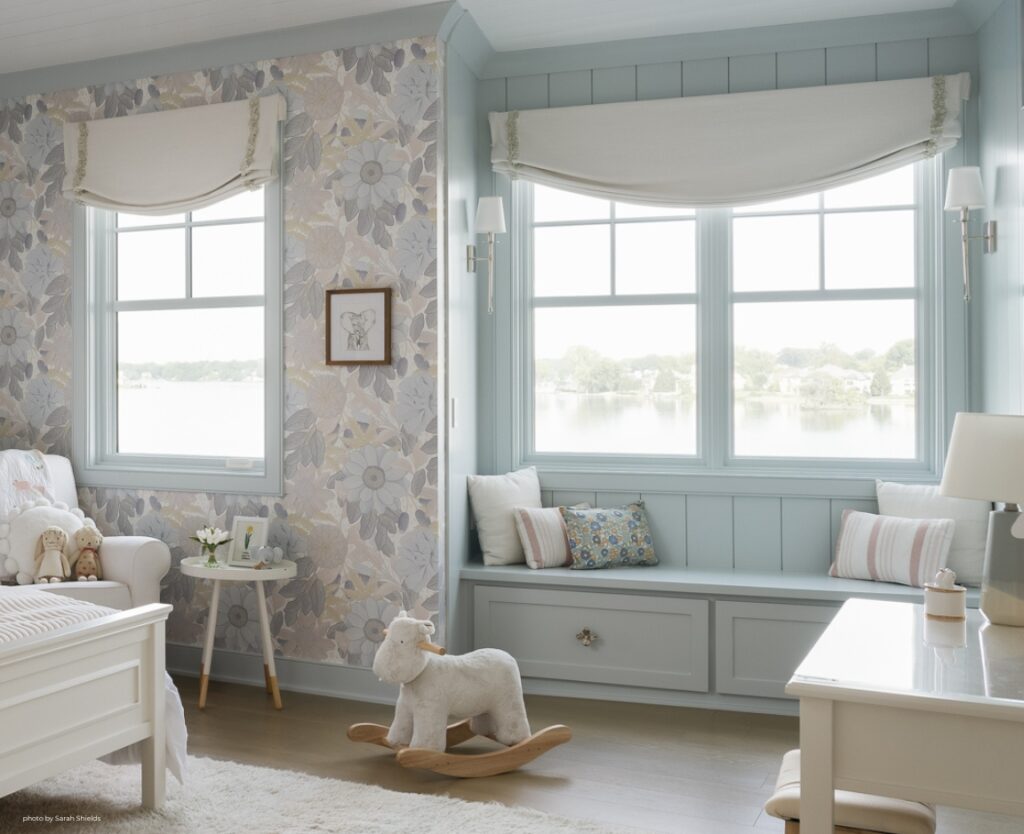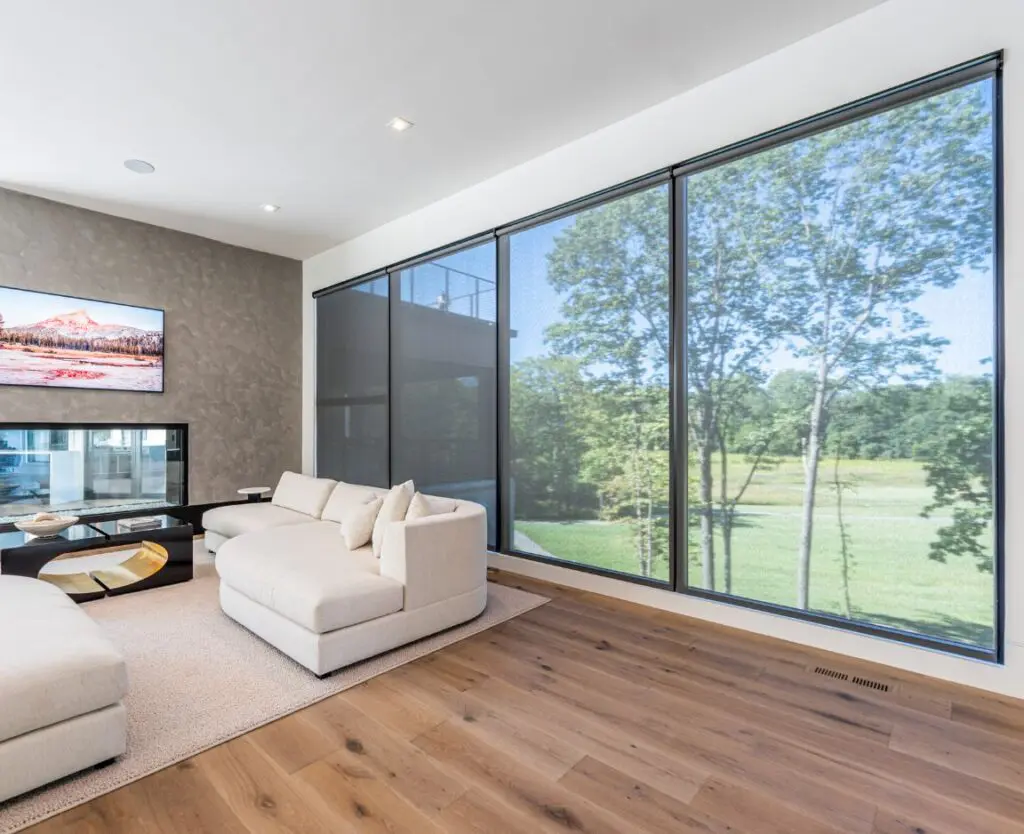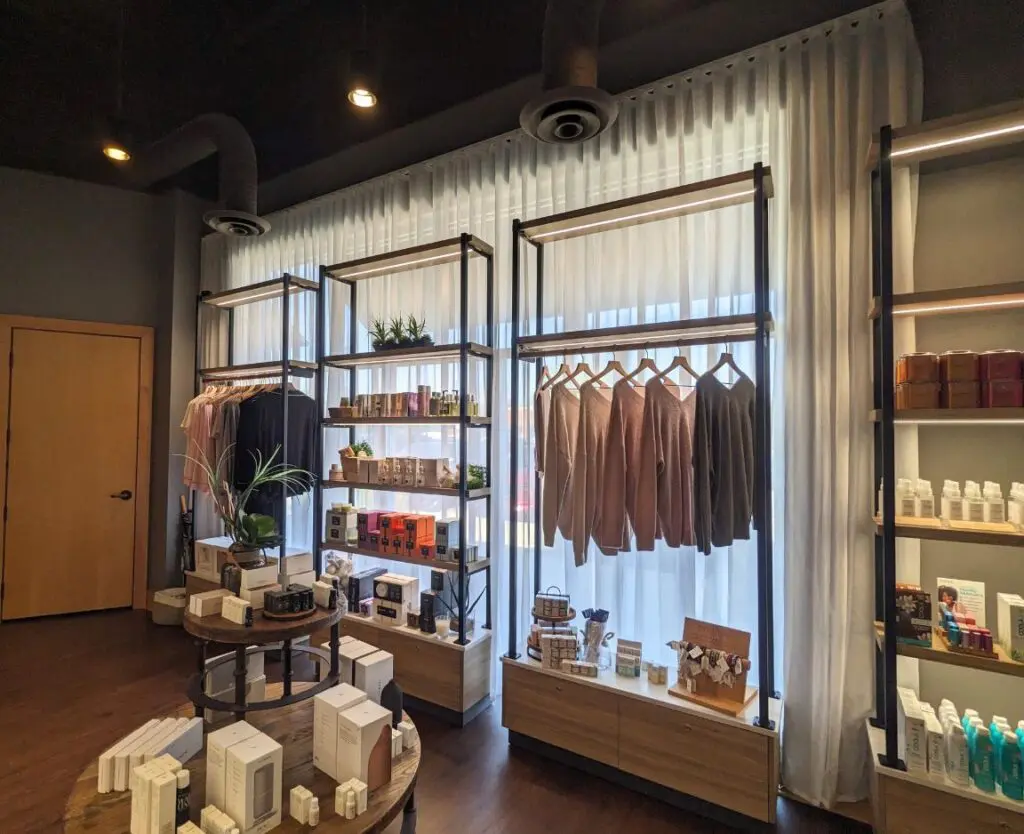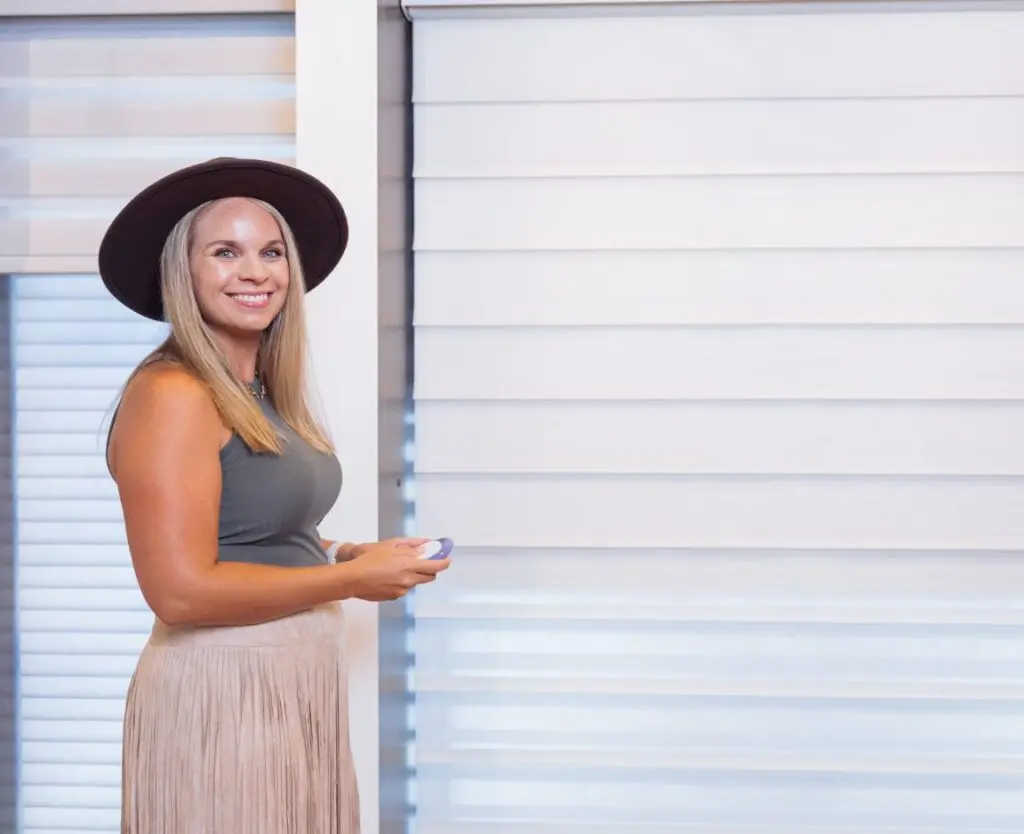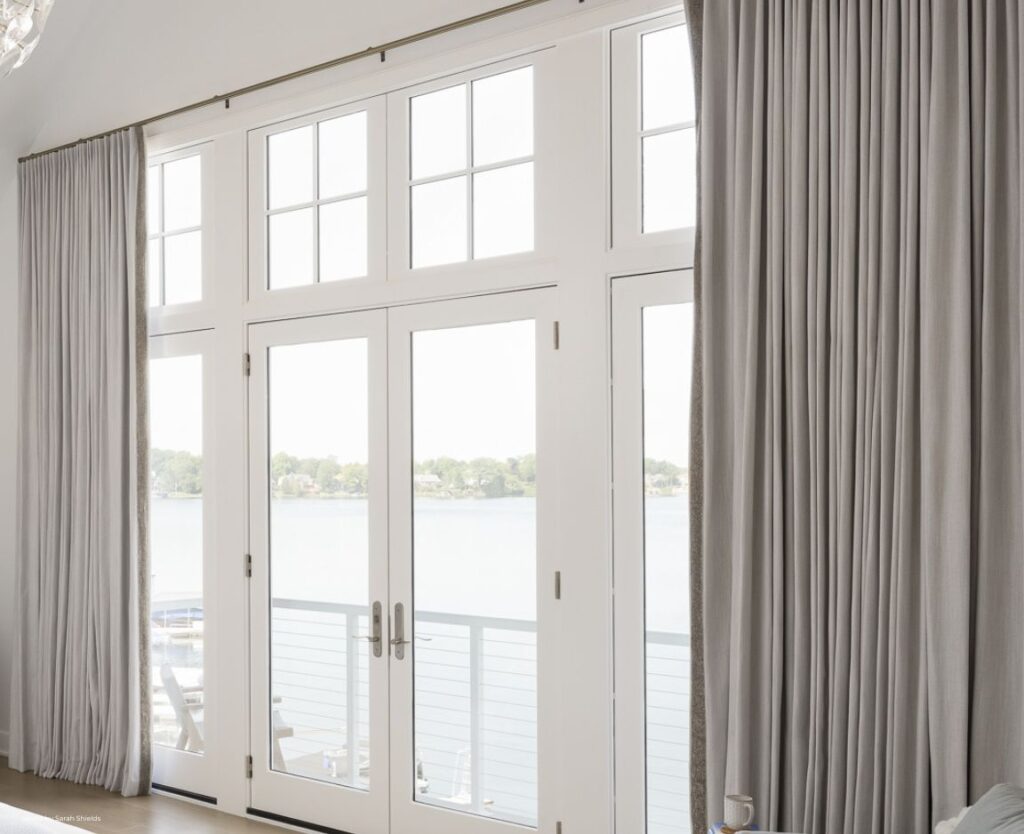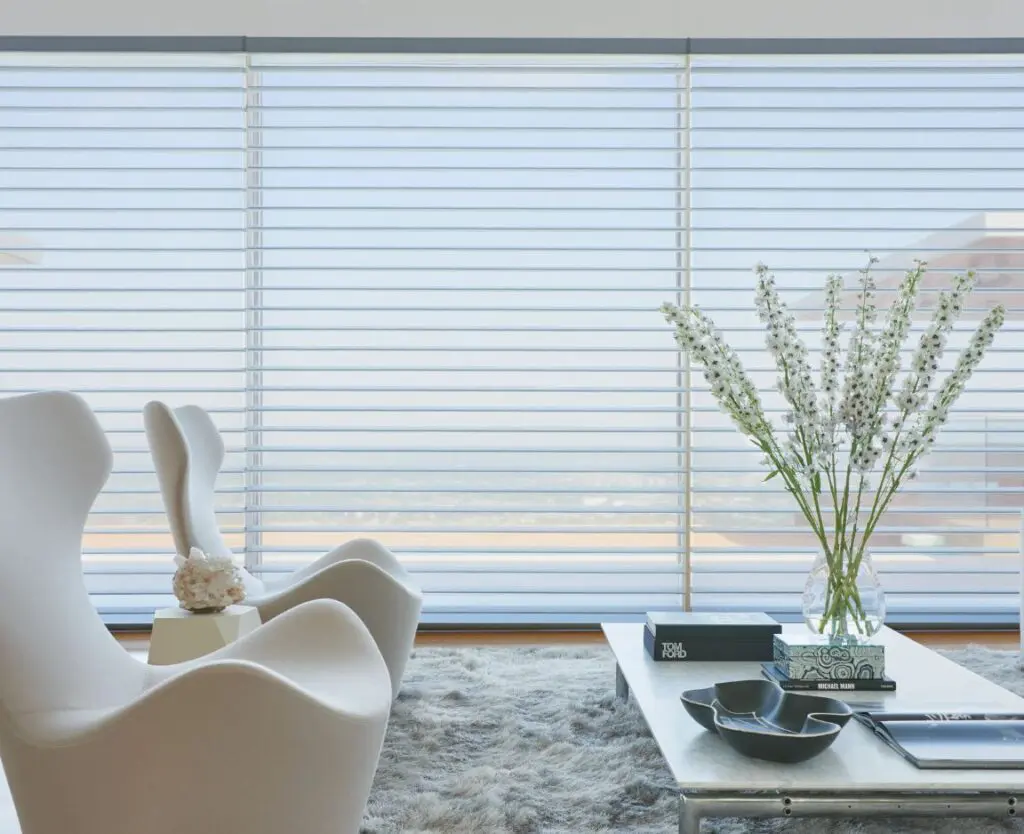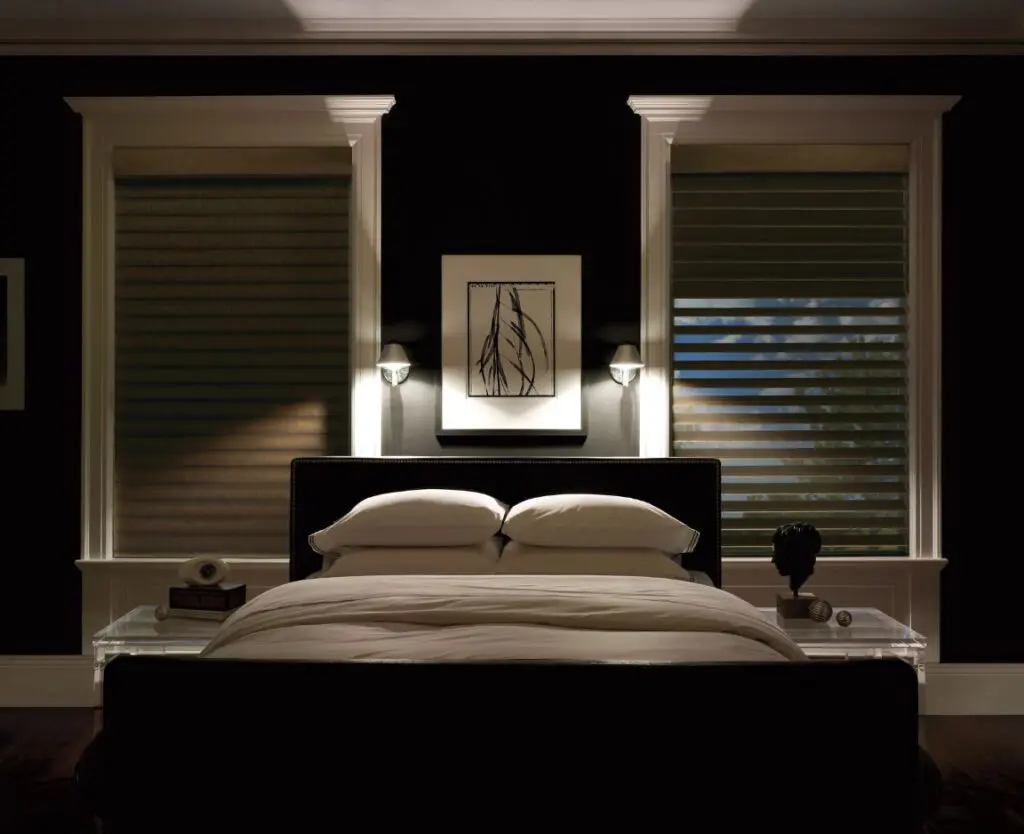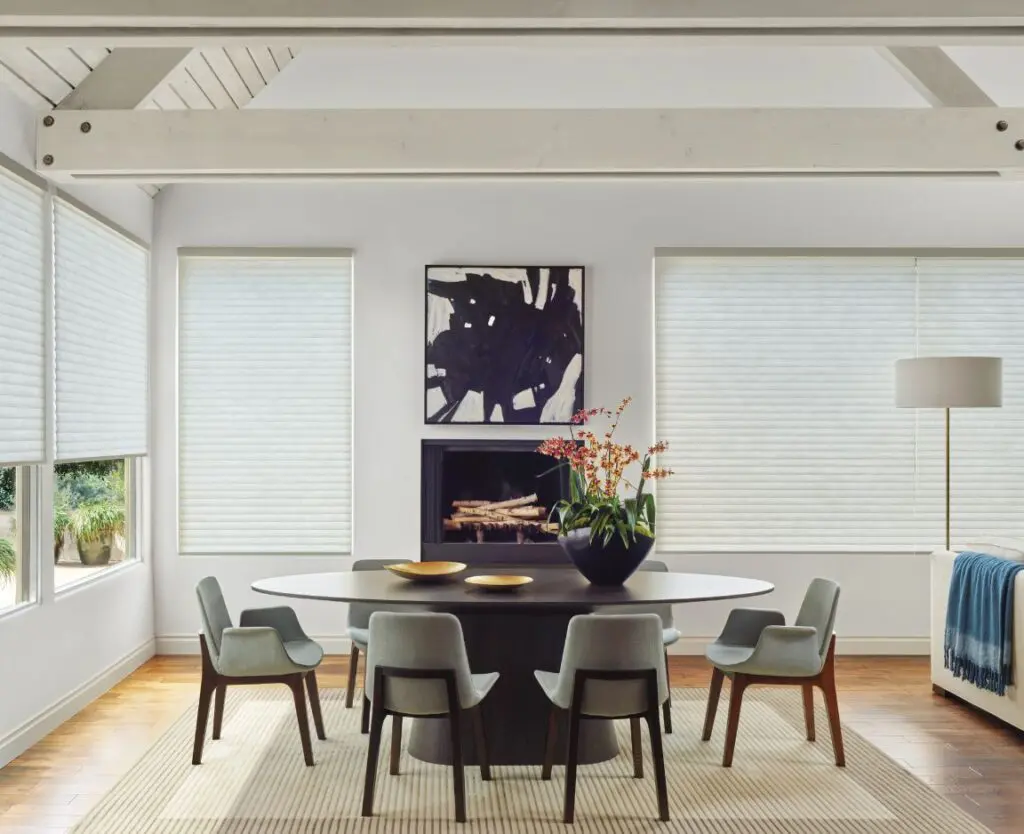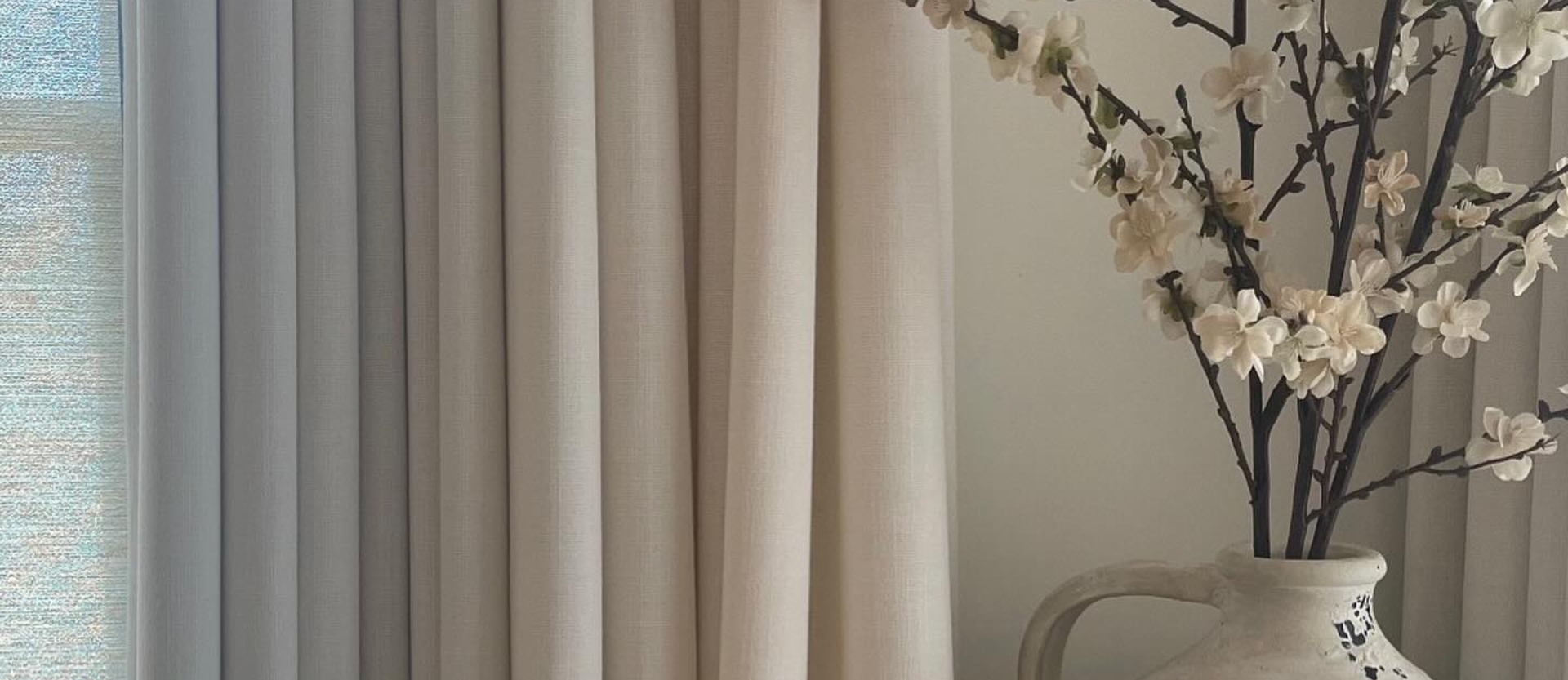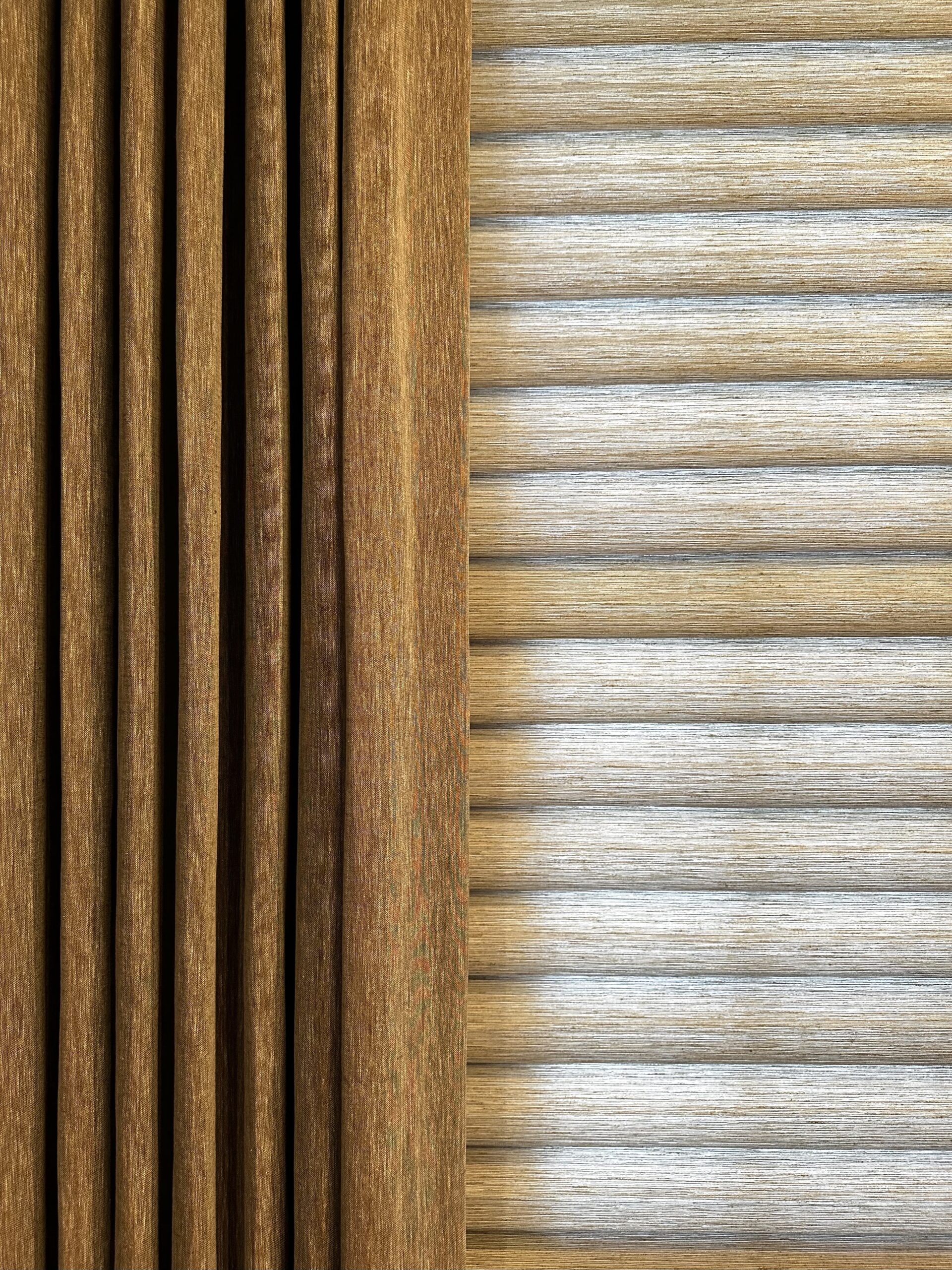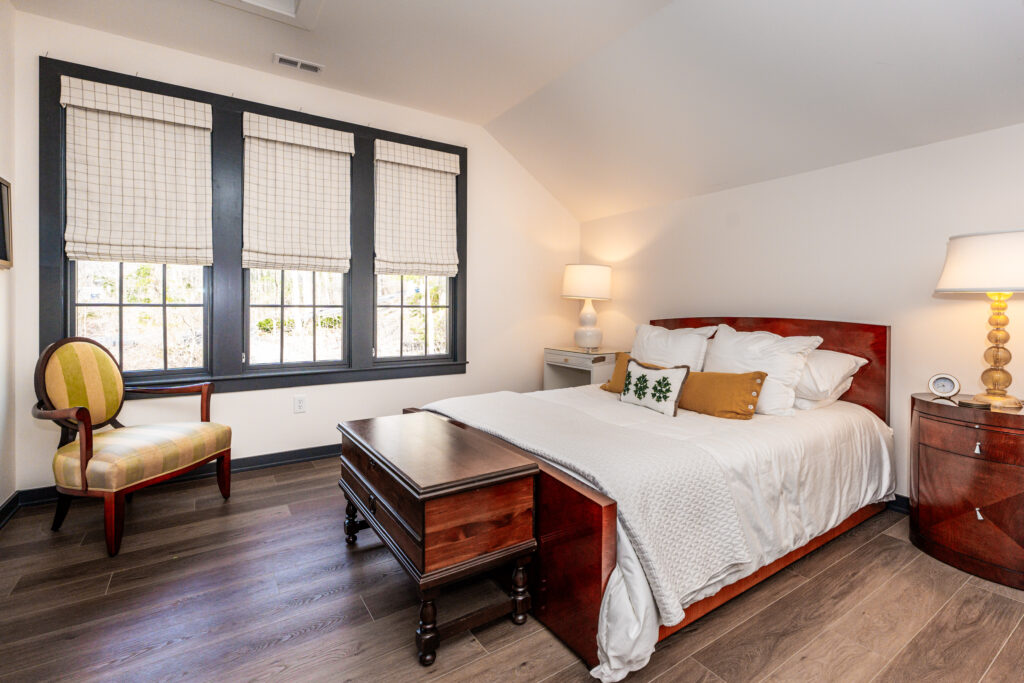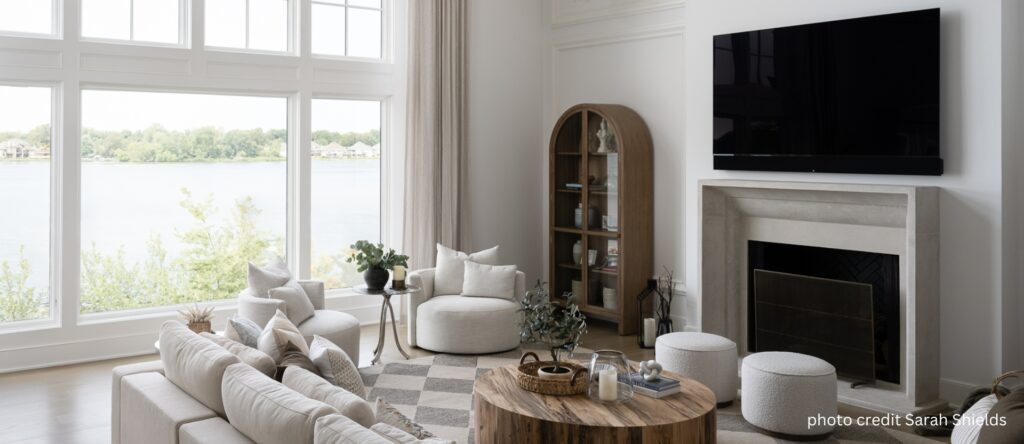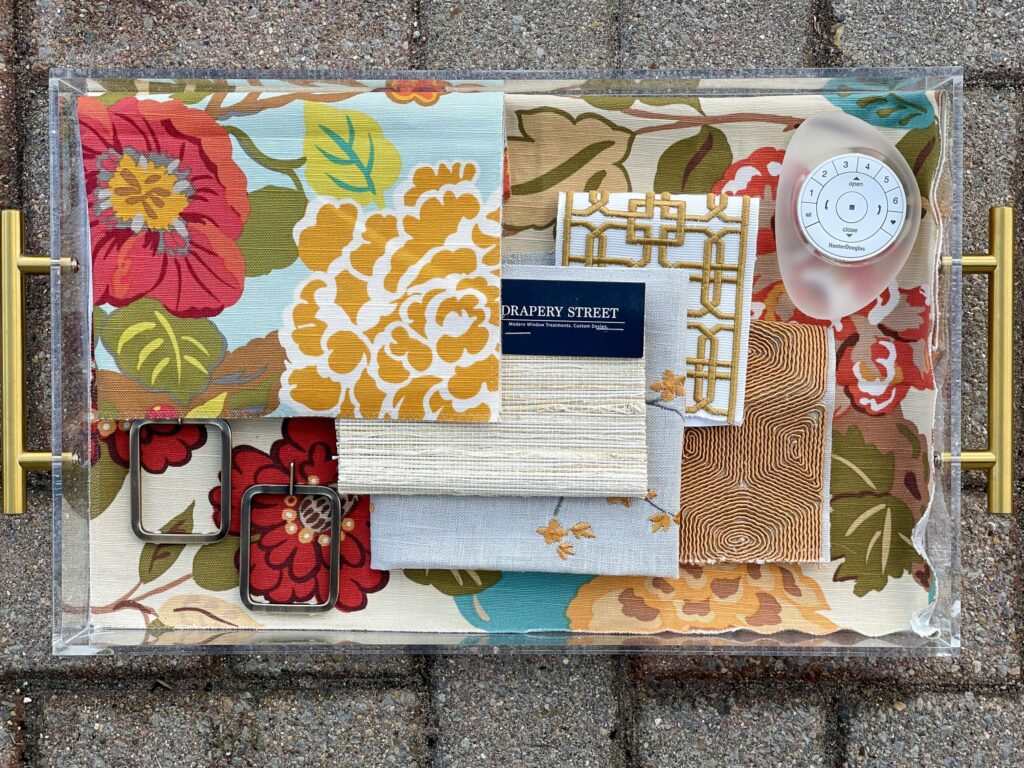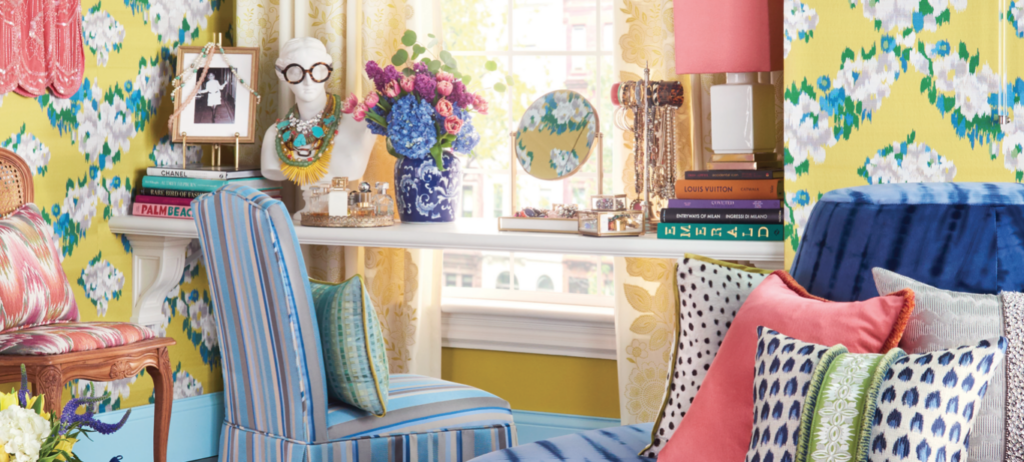In the interior design world, window treatments are broken down into two categories: hard and soft treatments.
Hard window treatments include blinds, shutters, shades, and cornices.
Soft window treatments include Roman shades, draperies, sheers, and valances.
Hard and soft window treatments can be used individually, or they can be combined to create a layered look with more functionality.
These are the top reasons to layer window treatments:
Aesthetics
While a single window treatment can look great on its own, layering treatments can add even more dimension and visual interest. Adding draperies to a window with blinds, for instance, can add softness. A valance can add a pop of color or an interesting pattern that you could not otherwise achieve with a shade alone.
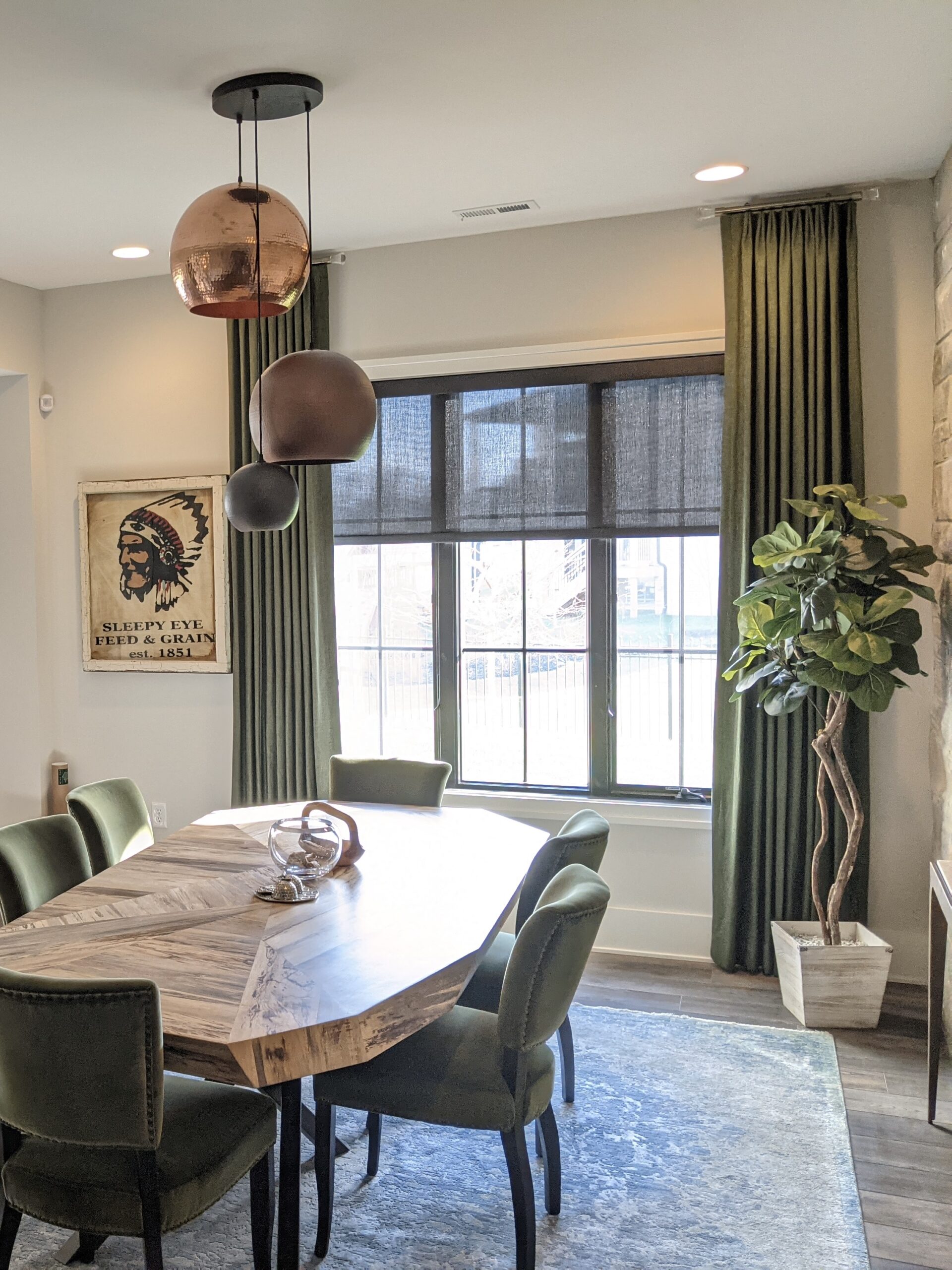
There are certain aesthetic features that can only be accomplished with a certain treatment. Drapes, for example, need to be used if you’d like your windows to appear wider. Roman shades can make a window look taller. Layered together, they add great height and presence to a room.
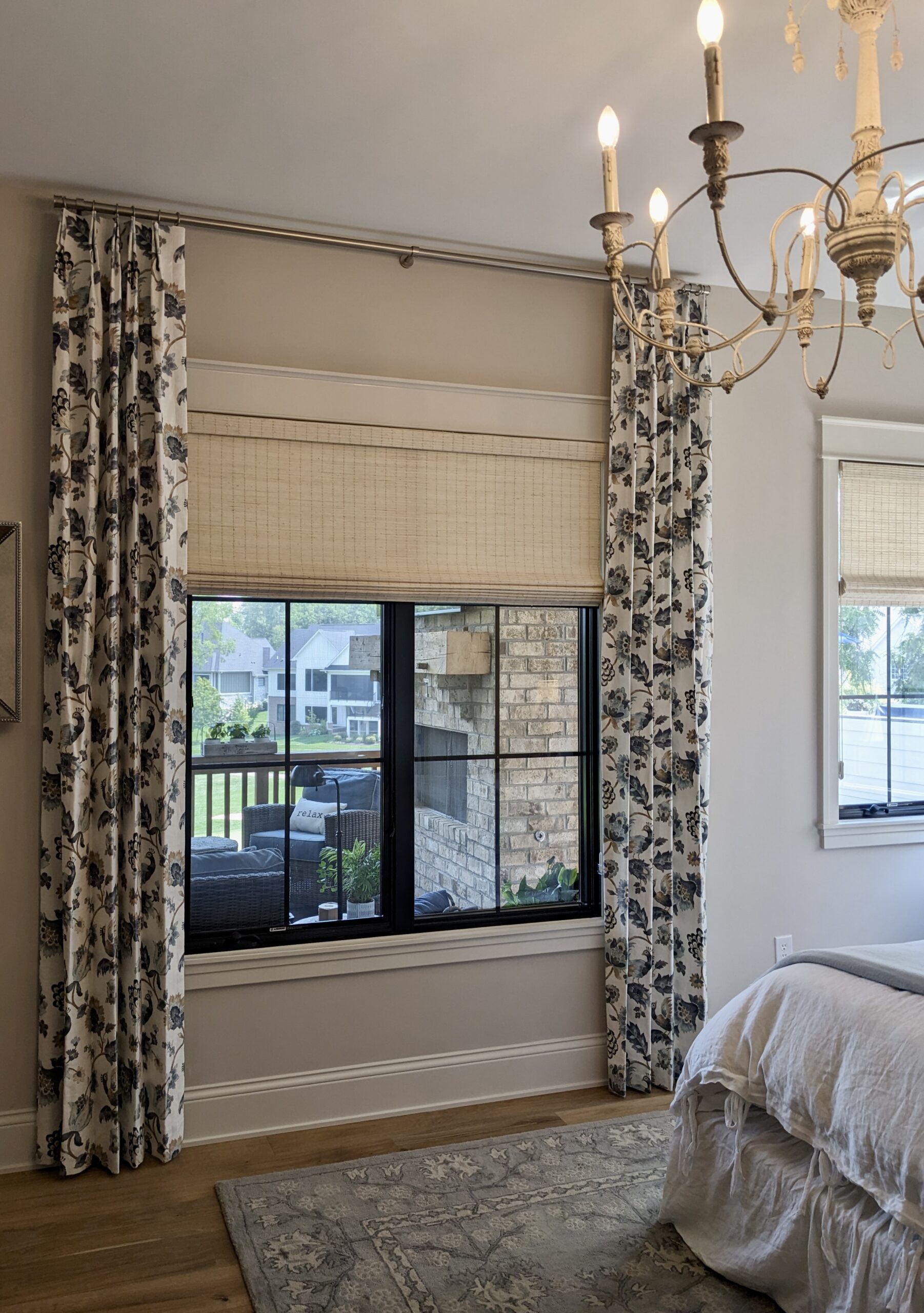
Light Control
Different treatments provide different variations of light control. Layering different treatments allows you to unlock more light control options. A sheer woven shade with functioning drapery panels, for instance, would provide both light-filtering and room-darkening options.
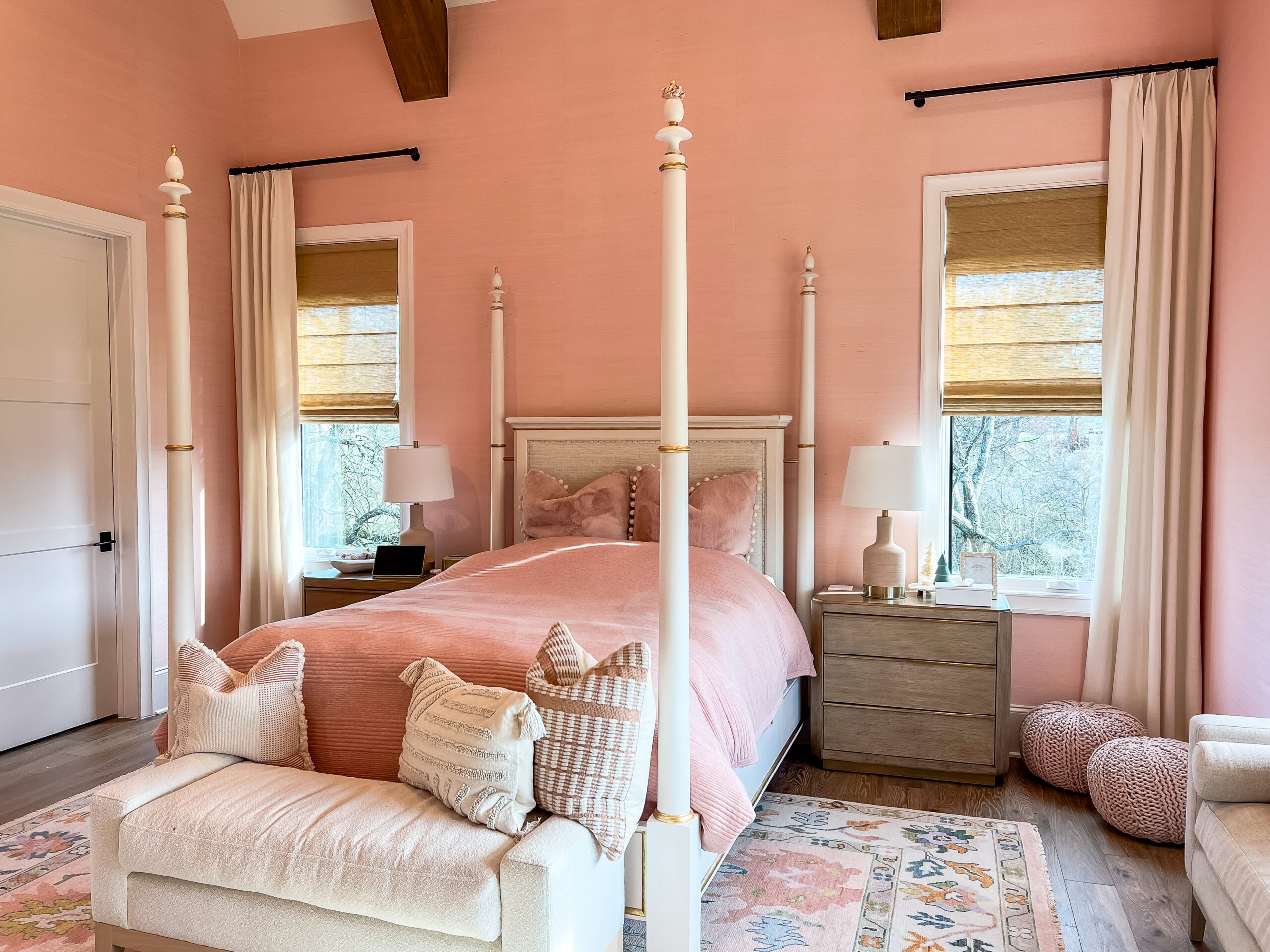
Hunter Douglas’ Silhouette Duolite® shades are a combination of two products in one. They offer the light-diffusing benefits of a translucent Silhouette shading with an integrated room-darkening roller shade.
Blackout
There are several types of window coverings that can help darken a room but to achieve the best blackout conditions you will need to layer several different treatments. Lined drapes and Hunter Douglas Duette® Honeycomb Shades are a successful combination. Perhaps our favorite is this project that combines shutters, a blackout-lined cornice, blackout lined drapes, and a motorized blackout roller shade.
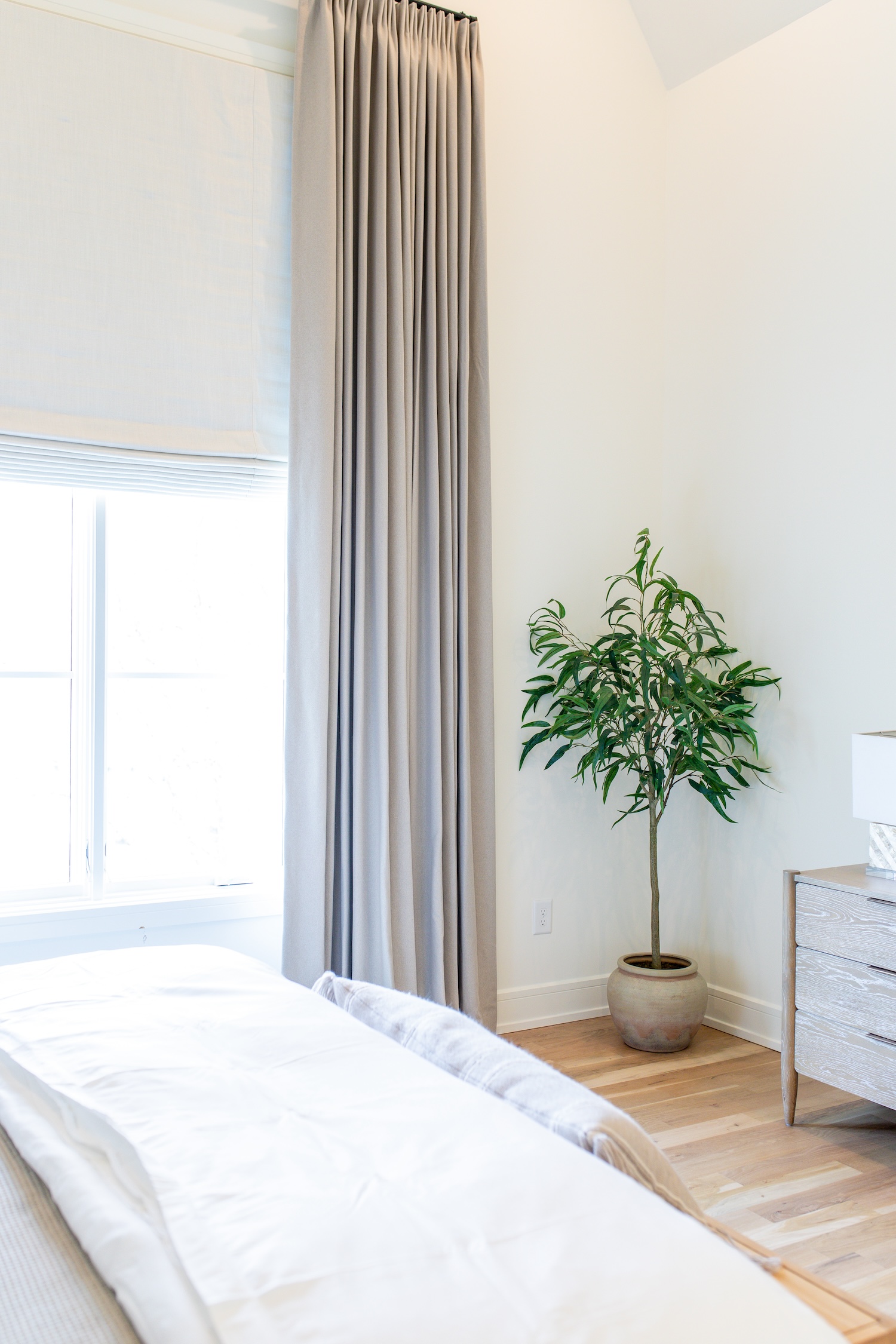
Energy Efficiency
Up to 50% of a home’s heating and cooling can be lost through its windows. Well-constructed window coverings will actually enhance the energy efficiency of your home. When you double up on treatments, not only do you get more light control options and aesthetic benefits, but you’ll also find that your home operates more efficiently. Hunter Douglas Honeycomb shades have earned the industry’s highest energy efficiency rating. Combine them with lined drapes and watch your energy bills shrink.
Hide Headrails
While many window treatments have slim or decorative headrails that look great, some people still prefer that they are disguised or hidden. A beautiful set of drapery panels on a gorgeous drapery rod will steal the attention away from the headrail. Or, a cornice can be used to completely hide a headrail.
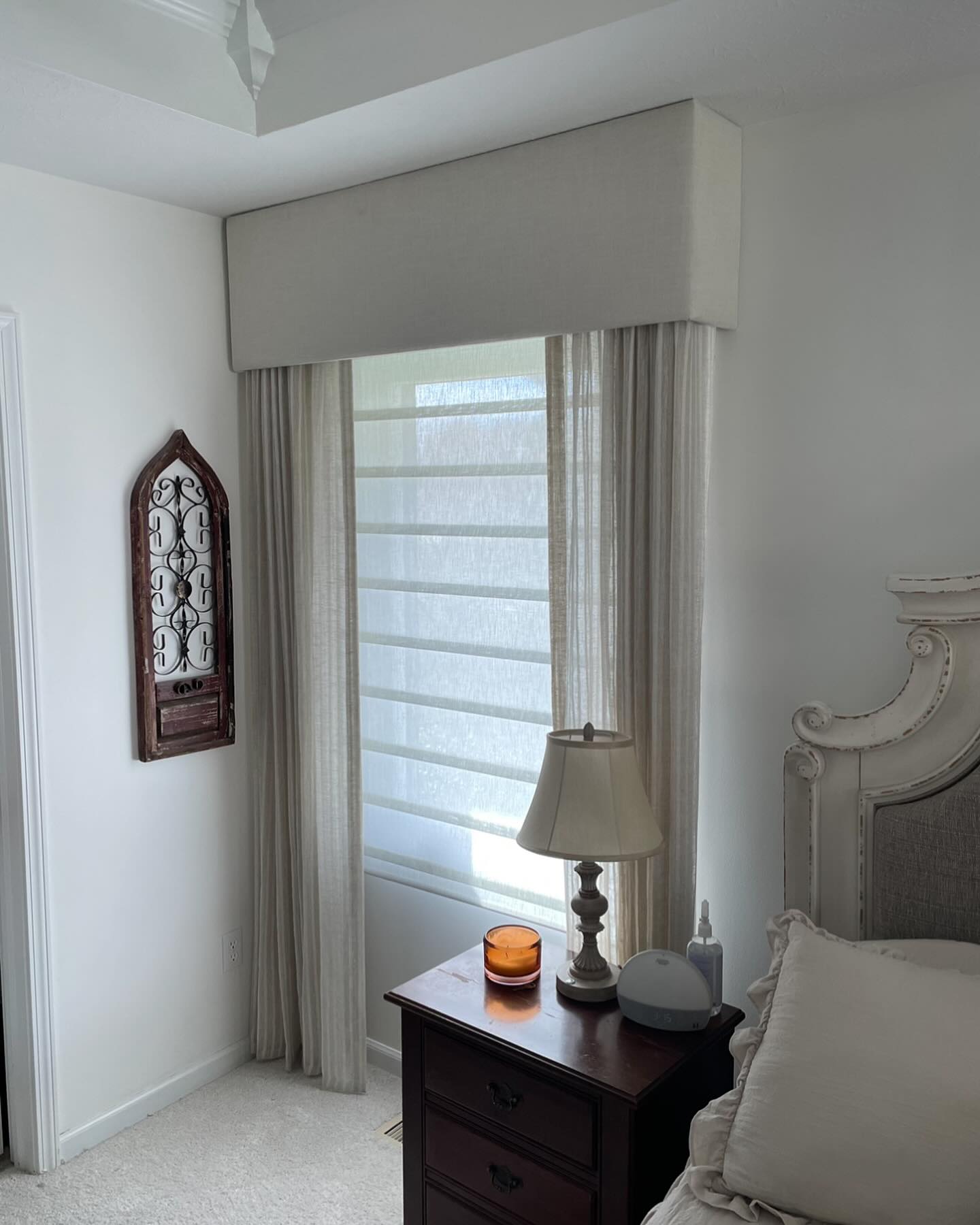
When combining window treatments, it’s important to work with a professional who knows which ones work well together and how to install them correctly. Installation is always key, but even more so when layering treatments together. Our designers are window treatment specialists and you can count on them to have the knowledge and know-how to combine the right treatments to accomplish your design goals. We use our own full-time installers to make sure your treatments are precisely installed. We’d love to help you find the right combination of window treatments for your home. Schedule a design consultation here.

